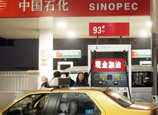
The yuan's long march toward becoming a global currency has just received a major fillip.
The State Council this month decided to proceed with a plan to make the currency convertible on the capital account, in addition to proposing interest rate reforms and allowing individuals to invest offshore. These steps cement Beijing's commitment toward making the yuan an internationally accepted reserve currency and confirm that the endgame is getting nearer.
Given the already rapid take-up of the currency in locations as far apart as Hong Kong, London, Singapore, Taipei, Paris, New York and Sydney, it is hard to believe that it has been barely three years since China allowed companies anywhere in the world to settle their international trade in yuan. In 2010, Beijing embarked upon its ambitious program to make the yuan an international currency, rivaling the clout of the US dollar and euro, and reflecting its own heft in global trade.
Standard Chartered's Renminbi Globalization Index shows that the international use of the currency has soared nine-fold since we started tracking it in December 2010. Trade settlement and other international payments have been the biggest drivers of late.
Equally impressive growth in the other three parameters - offshore yuan deposits, Dim Sum bonds and yuan certificates of deposit, and offshore yuan forex turnover - round out the index's broad-based improvements.
As of the fourth quarter of 2012, more than 12 percent of China's total trade in goods and services was settled in yuan, up from less than 8 percent a year before. While this is impressive, it also reveals the tremendous scope for further internationalization of the currency.
According to SWIFT data, the yuan is the world's 13th most-used international currency, accounting for 0.7 percent of all global cross-border payments.

















 Modern movie dream in retro Mingguo street
Modern movie dream in retro Mingguo street


![]()
